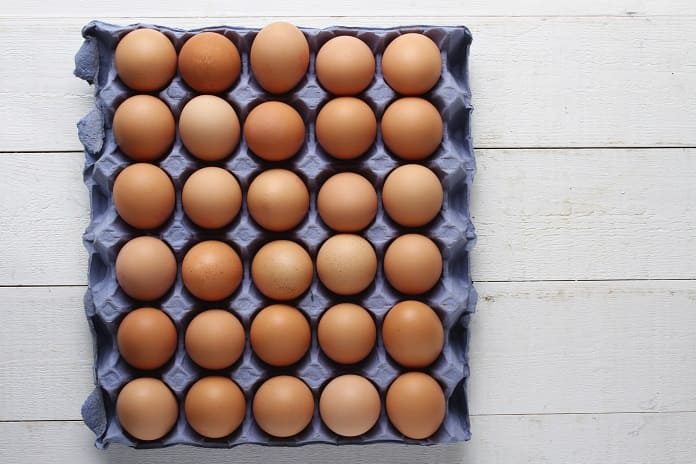Scientists from Martin Luther University Halle-Wittenberg (MLU) have found a way to increase the amount of vitamin D in eggs.
Vitamin D is one of the fat-soluble vitamins essential for healthy bones. Vitamin D is synthesized in the skin on exposure to sunlight. Inadequate exposure to sunlight can lead to vitamin D insufficiency, which is becoming prevalent worldwide, making dietary supplementation of vitamin D an attractive option to increase vitamin D levels.
Researchers from Martin Luther University Halle-Wittenberg (MLU) recently explored a new strategy to increase the vitamin D content in chicken eggs by exposing them to UV-B light. This study was published in the journal Poultry Science. In this study, the researchers used two different breeds of chicken, housed indoors, and exposed them to UV-B light. They analyzed the vitamin D content of the newly laid eggs, and compared eggs from chickens that had different durations of light exposure per day. The impact of this additional light on the behaviour and egg-laying activity of the hens was also studied.
On average, the amount of vitamin D in eggs from UV-B exposed chickens tripled in both the chicken breeds. These chickens were exposed to the UV-B light for nearly six hours per day for three weeks. This exposure to artificial light did not affect the hens’ behaviour or result in any other obvious problems.
The scientists concluded that this method is very useful to boost the levels of vitamin D in eggs, thus providing extra amounts of this useful vitamin. In contrast to previous studies, where only one chicken was exposed per lamp under ideal conditions, this study was carried out in real indoor conditions with many chickens. According to Dr. Julia Kühn, “The idea was to stimulate the natural vitamin D production of chickens. Using UV lamps in the henhouses would increase the vitamin D content of the eggs,”
This study provides a practical solution to enrich the amount of vitamin D in eggs. Employing this simple method in chicken farms would help prevent vitamin D deficiency, thus promoting better health.
Written by Dr. Radhika Baitari, MS
References:
Kühn, J., Wassermann, C., Ebschke, S., Schutkowski, A., Thamm, K., Wensch-Dorendorf, M., von Borell, E. and Stangl, G. (2019). Feasibility of artificial light regimes to increase the vitamin D content in indoor-laid eggs. Poultry Science.
Pressemitteilungen.pr.uni-halle.de. (2019). A solarium for hens? How to increase the vitamin D content of eggs. [online]. Available at: https://pressemitteilungen.pr.uni-halle.de/index.php?modus=pmanzeige&pm_id=3110 [Accessed 25 Jun. 2019].



